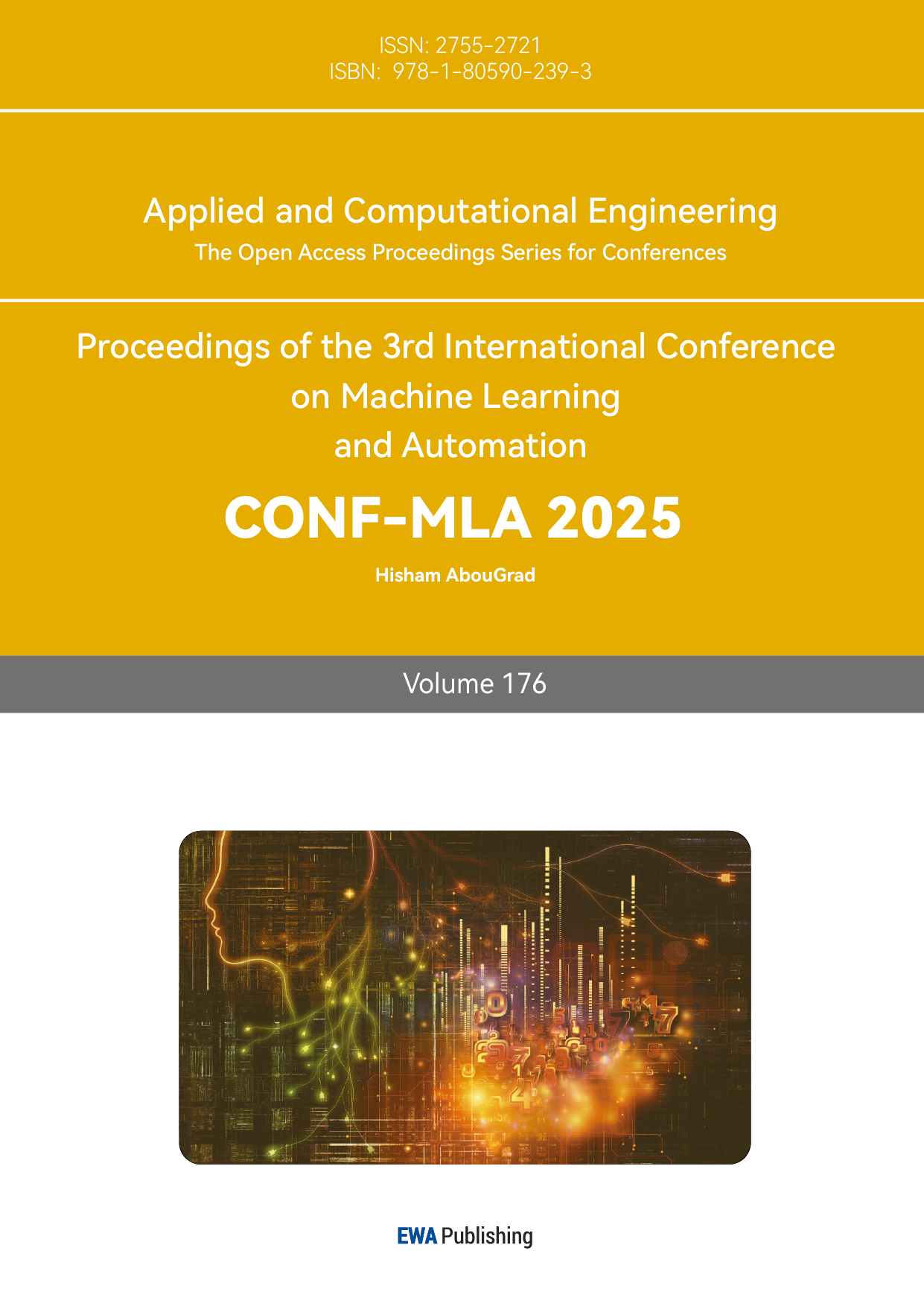References
[1]. Anil, R., Dai, A.M., Firat, O., Johnson, M., Lepikhin, D., Passos, A., Shakeri, S., Taropa, E., Bailey, P., Chen, Z., et al.: Palm 2 technical report. arXiv preprint arXiv: 2305.10403 (2023)
[2]. Plaat, A., Wong, A., Verberne, S., Broekens, J., van Stein, N., & Back, T. (2024). Reasoning with large language models: A survey. arXiv preprint arXiv: 2407.11511.
[3]. Wang, C., Zhao, J., & Gong, J. (2024). A Survey on Large Language Models from Concept to Implementation. arXiv preprint arXiv: 2403.18969.
[4]. Zhou, Z., Ning, X., Hong, K., Fu, T., Xu, J., et al. (2024). A Survey on Efficient Inference for Large Language Models. arXiv preprint arXiv: 2404.14294.
[5]. Wei, J., Wang, X., Schuurmans, D., Bosma, M., Chi, E., Le, Q., & Zhou, D. (2022). Chain of thought prompting elicits reasoning in large language models. arXiv preprint arXiv: 2201.11903.
[6]. Zhang, Z., Zhang, A., Li, M., Zhao, H., Karypis, G., & Smola, A. (2023). Multimodal chain-of-thought reasoning in language models. arXiv preprint arXiv: 2302.00923.
[7]. Dosovitskiy, A., Beyer, L., Kolesnikov, A., et al. (2021). An image is worth 16x16 words: Transformers for image recognition at scale. 9th International Conference on Learning Representations (ICLR 2021), Virtual Event.
[8]. Radford, A., Kim, J. W., Hallacy, C., et al. (2021). Learning transferable visual models from natural language supervision. Proceedings of the 38th International Conference on Machine Learning (ICML 2021), 139, 8748–8763.
[9]. Zhang, X., Deng, Y., Jiang, Z., & Rush, A. (2023). Auto-CoT: Automatic chain-of-thought prompting in large language models. International Conference on Learning Representations (ICLR 2023).
[10]. Wang, X., Wei, J., Schuurmans, D., Le, Q., Chi, E., Narang, S., Chowdhery, A., & Zhou, D. (2022). Self-consistency improves chain of thought reasoning in language models. arXiv preprint arXiv: 2203.11171.
[11]. Yao, S., Zhao, J., Yu, D., Du, N., Shafran, I., Griffiths, T., Cao, Y., & Narasimhan, K. (2023). Tree of thoughts: Deliberate problem solving with large language models. Advances in Neural Information Processing Systems, 36.
[12]. Liu, T., Guo, Q., Hu, X., Jiayang, C., Zhang, Y., Qiu, X., & Zhang, Z. (2025). Efficient reasoning with model collaboration. arXiv preprint arXiv: 2504.00424.
[13]. Zheng, G., Yang, B., Tang, J., Zhou, H.-Y., & Yang, S. (2023). DDCoT: Duty-distinct chain-of-thought prompting for multimodal reasoning in language models. Advances in Neural Information Processing Systems, 36, 5168–5191.
[14]. Gao, J., Li, Y., Cao, Z., & Li, W. (2024). Interleaved-modal chain-of-thought. arXiv preprint arXiv: 2411.19488.
[15]. Yang, Z., Li, L., Wang, J., Lin, K., Azarnasab, E., Ahmed, F., Liu, Z., Liu, C., Zeng, M., & Wang, L. (2023). MM–REACT: Prompting ChatGPT for multimodal reasoning and action. arXiv preprint arXiv: 2303.11381.
[16]. Raffel, C., Shazeer, N., Roberts, A., Lee, K., et al. (2020). Exploring the limits of transfer learning with a unified text-to-text transformer. Journal of Machine Learning Research, 21, 140: 1–140: 67.
[17]. Ye, D., Lin, Z., Han, X., Li, J., & Tan, C. (2023, March 21). Flan-alpaca: Instruction tuning for language models with FLAN and Alpaca. GitHub. https: //github.com/declare-lab/flan-alpaca
[18]. Luo, J. (2025, January). OpenAI-CLIP-Feature. GitHub. https: //github.com/jianjieluo/OpenAI-CLIP-Feature
[19]. Lu, P., Mishra, S., Xia, T., Qiu, L., Chang, K.-W., Zhu, S.-C., Tafjord, Ø., Clark, P., & Kalyan, A. (2022). Learn to explain: Multimodal reasoning via thought chains for science question answering. Advances in Neural Information Processing Systems, 35, 2507–2521.
[20]. Yu, Z., Yu, J., Cui, Y., Tao, D., & Tian, Q. (2019). Deep modular co-attention networks for visual question answering. CVPR 2019, 6281–6290.https: //doi.org/10.1109/CVPR.2019.00644
[21]. Kim, J.-H., Jun, J., & Zhang, B.-T. (2018). Bilinear attention networks. Advances in Neural Information Processing Systems, 31, 1571–1581.
[22]. Gao, P., Jiang, Z., You, H., Lu, P., et al. (2019). Dynamic fusion with intra- and inter-modality attention flow for visual question answering. CVPR 2019, 6639–6648. https: //doi.org/10.1109/CVPR.2019.00680
[23]. Kim, W., Son, B., & Kim, I. (2021). ViLT: Vision-and-language transformer without convolution or region supervision. Proceedings of the 38th International Conference on Machine Learning (ICML 2021), 139, 5583–5594.
[24]. Lu, P., Qiu, L., Chen, J., Xia, T., Zhao, Y., Zhang, W., Yu, Z., Liang, X., & Zhu, S.-C. (2021). IconQA: A new benchmark for abstract diagram understanding and visual language reasoning. NeurIPS 2021 Datasets and Benchmarks Track.
[25]. Li, L. H., Yatskar, M., Yin, D., Hsieh, C.-J., & Chang, K.-W. (2019). VisualBERT: A simple and performant baseline for vision and language. arXiv preprint arXiv: 1908.03557.
[26]. Khashabi, D., Min, S., Khot, T., Sabharwal, A., Tafjord, Ø., Clark, P., & Hajishirzi, H. (2020). UNIFIEDQA: Crossing format boundaries with a single QA system. Findings of EMNLP 2020, 1896–1907. https: //doi.org/10.18653/v1/2020.findings-emnlp.171
[27]. Lu, P., Peng, B., Cheng, H., Galley, M., Chang, K.-W., Wu, Y. N., Zhu, S.-C., & Gao, J. (2023). Chameleon: Plug-and-play compositional reasoning with large language models. NeurIPS 2023.
[28]. Zhang, R., Han, J., Zhou, A., Hu, X., Yan, S., Lu, P., Li, H., Gao, P., Qiao, Y.: Llama-adapter: Efficient fine-tuning of language models with zero-init attention. arXiv preprint arXiv: 2303.16199 (2023).



